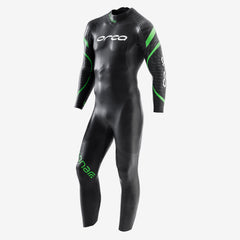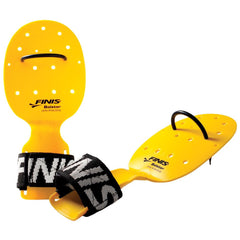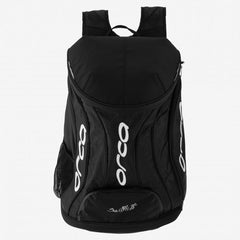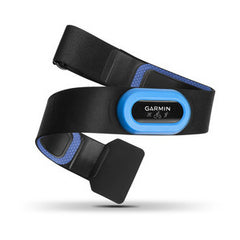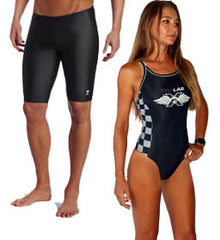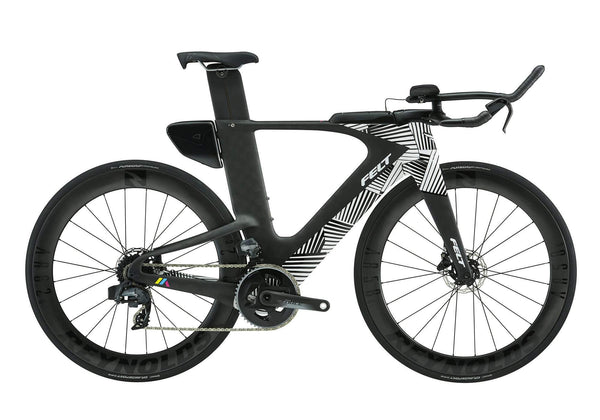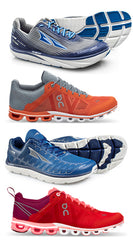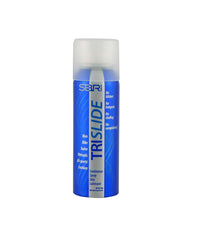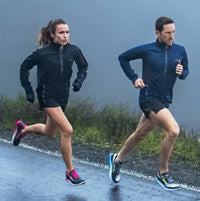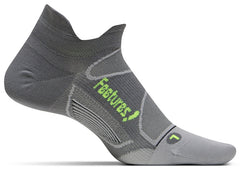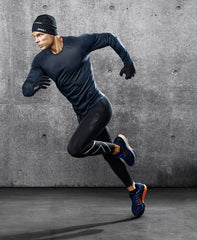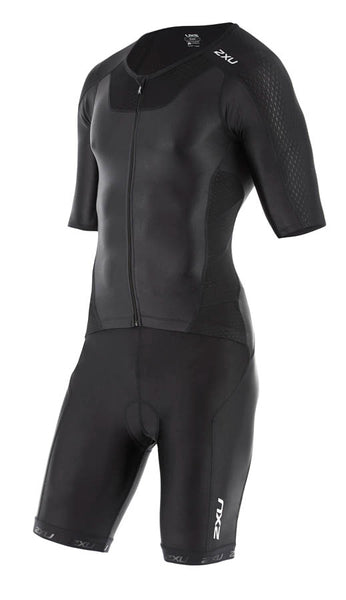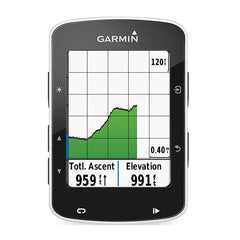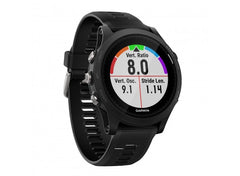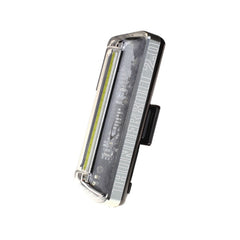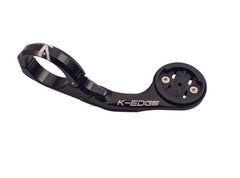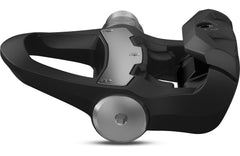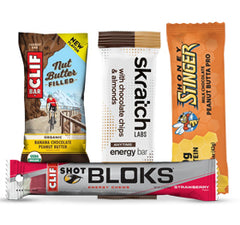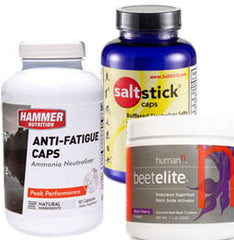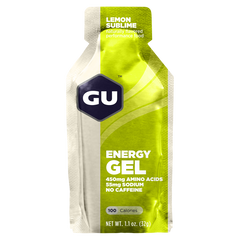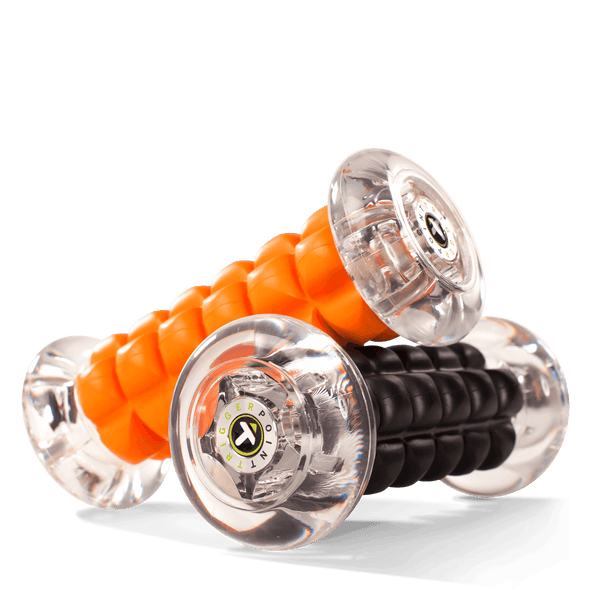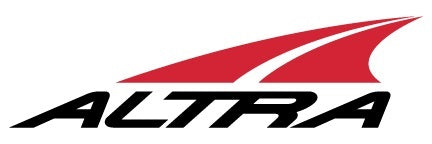Triathlon Race Day Tips
Triathlon Race Day Tips and Suggestions
Preparing for your first triathlon consists of training, planning, time management and plenty of sweat and sore muscles. However, after all that training, it is helpful to plan and prepare for race day so you can have a successful and enjoyable triathlon experience. After all you spent all that time training and now it is time to test yourself and see what you are able to accomplish. This article is full of helpful tips and advice about to best tackle the triathlon race successfully and enjoy your experience so you will want to do it all over again.
Before Race Day
Make sure you have all the necessary gear. See this article about gear recommendations and the triathlon gear checklists. We highly recommend the use of a triathlon bag for your gear you will need to bring with you and use during the triathlon. You will store the gear for each leg in your transition a area in your bag.
Tips:
1. Practice dry runs of each race transitions. You will need to transition from swim to bike and from bike to run. This will give you the opportunity to catch missing gear and how best to store the items so you will not need to search during the race.
2. Make sure to write your name & number on your items that you will leave in the transition area with a permanent marker. Examples include inside of your wetsuit, helmet, shoes, bag, etc. It is very common for a tired racer to take the items of the racer next to them by mistake. This helps prevent that from happening.
3. Will you be using a fitness monitor? If so, make sure the batteries have enough charge to get you through the end of the race.
4. Know the course in advance if possible. Where are the hills, any tight turns, aid station locations.
5. Make sure to get enough sleep at least a few days before the race. Sleep is always important, but it is necessary building up to race day.
6. Avoid using new gear on race day with a learning curve or a break in period including new shoes and/or clip on pedals.
7. Keep your diet consistent leading up to the race to avoid stomach and digestive issues.
8. Make sure your toenails are clipped prior to the race. Preferable clip them minimum of 3 nights in advance
9. Make a race day check list. See Triathlon LAB’s suggested list and modify to your own needs.
a. Swim to bike transition
1. have a towel to stand on to keep feet clean
2. have a bottle of water to rinse off feet prior to putting on shoes
3. Place your swim cap, goggles, wetsuit in your bag so you don’t lose them.
4. Put on your race number
5. Re-apply sunscreen
6. Put on your helmet
7. cycling shoes (and socks if desired)
8. Sunglasses
9. Light jacket or wind breaker if cold and wet out.
b. Bike to Run transition
1. Run cap or Visor
2. Running shoes
3. Race belt
4. Nutrition - gels, hydration
5. Sunscreen
The Night Before
Organize all your gear: Go over your check list and make sure you have it all. Group your items together by race leg, including: Swim, swim to bike transition, bike special needs, bike to run transition, run special needs. Keep in separate bags and put in your transition bag.
Eat normally: Now is not the time to try new foods and cuisines. If the race is going to last for a couple of hours, it is probably a good idea to carb load to give your body a supply of glucose. A traditional pasta dinner may be a good option for you. However at the least try to have a portion of protein such as poultry, beef or fish, healthy fats and plenty of carbohydrates such as fruits, vegetables, whole grains and legumes. In addition, it is a good idea to eat this way the week leading up to the triathlon but at a minimum of 3 days prior. Try to eat dinner early between 4pm-6pm so you have plenty of time to digest it. Stay hydrated…no need to over drink, but drink when you are thirsty.
Get a good nights sleep:
This may seem obvious, but it is very important not to be sleep deprived leading up to your triathlon. Try to get in a habit of going to sleep early at least the week of the triathlon if not sooner to get your body on a good sleep rhythm.
Race Morning
Eat breakfast 2-3 hours before the race start. Again, don’t try anything new and eat normal. Try to shoot for 50% carbs, 30% protein and 20% fats. Sip water when thirsty. If you have issues eating and digesting prior to the race due to a nervous stomach or GI problems, you can try yogurt, kefir, or oatmeal.
Arrival time: Reduce unnecessary stress and get to the race plenty early. Generally an hour prior to the race is good. However, if you need to pick up race registration packets, consider getting there 1.5 hours early. Some transition spots are assigned, but if not assigned get your spot quickly as good spots will go fast. Try to get near the exit of the transition area so you will have a quicker and easier time exiting the area. Take note where your transition spot is so you won’t have to search for it during the race. It is helpful to make it stand out so it is easier to find. Some suggestions are using a balloon, bright towels or bags, tassels and ribbons to mark your location.
Check in: Is this a USA Triathlon (USAT) sanctioned triathlon? If so, you will need to bring your membership card and photo identification to the officials. You will also need to bring your race number so they can body mark your number on you.
Special needs bags: Typically only in longer ironman distance triathlons. If you need special food, drinks, clothing, sunscreen, energy food, etc while you are on the course, you will put in your special needs bag. These bags are placed at about halfway into the bike and run legs with your name and number. Give the bags to the volunteers who will get them to the right location on the course. Make sure to get your spot all set up in your transition area before it closes.
Transition Swim to Bike
You will need to create your own race day gear list. See Tri LABs sample race day checklist to use as a guideline. Make sure you take expected weather conditions into consideration when creating your gear list. (i.e rain conditions, wind, heat, etc.). Practice your transition several times until you are well versed. Make sure your bike is “race ready” . Brakes, tire pressure and derailuers should be checked prior to the race day. Make sure your bar ends are capped or you will not be allowed to race.
As mentioned before, take note of where your spot is in the transition area and try to memorize its location. Again, colorful markers like balloons, Colorful towels, ribbons and tassels make it easier to pick out in a crowd. You don’t want to waste time looking for your spot when you are tired and fresh out of the water. Get your area prepared. Have your towel out and place a water bottle (A milk jug filled with water works great) next to it in your spot to be used to rinse your feet. Have your T1 bag handy and easy to grab out of your bag.

Inside should be all you need for the run including your race number belt, your sunscreen, hat, sunglasses, etc.
T1: setup
Be a minimalist…don’t bring what you don’t need as space is limited and it will be easier to find what you need.
Bike: Ensure brake lever is set and not open and that quick release lever is set. Check that tire pressures are correct. Rack bike by saddle underneath the nose with handle bars facing you. Try to rack as close as possible to front. Set your bike in low gear to make it easier to begin cycling and getting clipped in. If using gloves, attach them to the handlebar using their straps. Fill you bento box with gels and energy bars or chews. We do not recommend duct taping energy gels to your bike frame as some do as adhesive could melt and cause tape to peel losing your gels, plus it may pull off paint or leave a sticky residue on your bike.
Start out by laying out your towel or transition mat so you can stand on it and keep your feet and gear clean. Put out a bottle or jug of water next to your towel to use to rinse off your feet after the swim.
Attach the race number sticker to your helmet. Put your helmet on your aerobars (upside down) for easy quick access. Put sunglasses inside.
Open your shoe straps to prepare your shoes. If wearing socks, you can roll them down to put on easier and quicker. Put them in your shoes. However, if you are using triathlon shoes, you can go sockless and save time in transition. Triathlon shoes are usually designed to have a soft interior for comfort without socks. Attach race number to bike. Make sure water bottles on bike are filled with your hydration of choice…water or energy drink, etc.
Attach race number belt to clothing if not using a race number belt. However, using a race number belt is recommended to make it easier to wear your race number and to protect your clothing from safety pin holes. If using a race number belt, attach the number to the belt and lay it out on your towel ready to put on.
Good to have:
A permament marker to write your race number on your arm and leg so you can avoid the long lines to get it done. Although it is not necessarily required.
Small first aid kit
Your favorite waterproof sunscreen and lip balm
Safety pins
Duct tape…never know when it will come in handy.
Prepare Yourself for Swim Start

Give yourself plenty of time so you don’t have to rush to the start line. Put your wetsuit on. Don’t forget to use a lubricant like Bodyglide or Trislide. (Do not use petroleum jelly as some do as it is harmful to the wetsuit.) Put the lubricant around your neck, wrists and ankles. If sleeveless, also put around the armholes of the wetsuit. This will reduce chafing and make it easier to put on and take off the wetsuit. See our helpful video here on how to put on a triathlon wetsuit. Put your goggles, then your swim cap. You want the goggle straps to go on under your swim cap so they will stay on your head better during waves and rough conditions.
Will you be using earplugs or nose plugs? If so, put them on.
If possible, you will want to get into the water before the race start so you can get yourself accustomed to the water temperature and conditions. Lightly swim a little bit to warm up. Try to stay calm and focused. If you are a slow swimmer do not go to the front of the pack. Best place to avoid getting crammed during the swim section is on the outside. If the swimmers will be making right turns on the swim then get on the left side to avoid the jam. You will swim a little further, but with less contact from other swimmers. Survey the swim before the start. Check buoy location, landmarks, etc.
Wetsuit Tip: Check out our video on how to put on a wetsuit. It will save you time and minimize damaging your wetsuit.
Goggles
We recommend 2 pairs of tested goggles so you have a backup pair in case a strap breaks. You may consider bringing a pair for different light conditions….clear for darker light and tinted for bright conditions. Recommend using antifog drops or wipes before race to reduce fogging and poor visibility. Some goggles come with an anti-fog coating, but it tends to wear off eventually. If you are swimming in the ocean, you should consider a hybrid or mask type of goggle. It will stay on your face better in rougher water and waves than the smaller goggles.
Swim Caps
Most races supply your swim cap. They are typically color coded based on your age/gender group. If the water is cold, you can wear a neoprene or cold weather swim cap underneath the race supplied cap.
Swim precaution:
If you start to feel tired, stressed or anxious, look for a lifeguard and get his attention. You can hang on to his board to rest and calm down.
Swim Tips:
You will need to “sight” your course while swimming. Occasionally lift head up to make sure you are going in correct direction. You don’t want to swim farther then necessary. It is also a possibility that you may get kicked are hit by other swimmers, especially if you are in the middle of the pack. If you’re goggles come off, you can roll to your back while putting them back on to save energy.
T1: Swim to Bike Transition Tips
After you remove your wetsuit, hang it on the rack, don’t leave on ground. Your towel should already be on the ground with your gear on it. Rinse off your fee with your water bottle, then stand on towel with your clean feet. Quickly dry your feet. If you are wearing triathlon clothing under your wetsuit (Or triathlon clothing and no wetsuit), then you do not need to change your clothing. If you are not wearing triathlon clothing, then you will need to put on the clothing you will wear for the cycling portion ( Cycling shorts and jersey. ) Triathlon clothing is recommended, but not required. See Triathlon LAB's clothing guide. If you will be wearing socks, go ahead and put them on and put your shoes on. If you are using sunscreen, now would be an appropriate time to re-apply. Put on your helmet and sunglasses. Buckle up your helmet. Put on your race number. If using gloves, put them on now. ( If you are comfortable putting the gloves on while riding, you can put them on when you are out of the transition area to save time.)
Most transition areas do no allow mounting the bike until you get to a designated spot. You will have to push your bike until you reach that point.

Hydration and Nutrition Needs
It is important not to get dehydrated before or during the triathlon as it will increase fatigue, increase likelihood of muscle cramps and even muscle injuries. Leading up the the triathlon make sure you take in adequate fluids, fruits and vegetables. During the triathlon you will want to carry your water or energy drink mixtures in your water bottles that fit in your bike cages for the bike leg. For longer triathlons, you may also want to wear a hydration belt to carry your drinks with you for steady hydration.
Nutrition needs during a triathlon will depend on the duration of the event. Some races will provide food, such as banana’s at aid stations. However, you will want to bring some of your own snacks in your bento box or food carriers. Good choices include energy bars, energy chews, and energy gels. (Energy gels should be consumed with water.)
Bike Leg
Be prepared in case of a flat. Make sure you have two spare tubes, CO2 cartridges or pump and tire levers. If you are using a deep dish race wheel, then also bring a valve extender and the correct size tube. It is very helpful to know how to change your own tubes. See our video here on How to change a tube. Plus Triathlon LAB also puts on free tube and tire changing workshops.
While cycling, keep your eye out for road hazards. These include rocks, fallen gear or water bottles, slippery paint on wet surfaces, etc. Drafting is not allowed in triathlons. When passing a rider, pass to the left and let them know you are coming by saying “on your left”.
Bike Finish : Bike to Run T2:


As you approach the bike to run transition, shift down to increase cadence and start to slow down. If you are comfortable you can unbuckle your shoes on the way to the dismount point to quicken your transition time. Remind yourself where your transition spot is before entering area. When you reach the dismount point go ahead and dismount your bike and walk it to your transition spot. Rack your bike and helmet. If you are not wearing triathlon clothing and are wearing cycling shorts, then you will need to change into your run clothing now. Put on your running shoes. Re-apply sunscreen and put on your running hat or visor if desired. Rotate your race number belt to the front for the run. Are you using a hydration belt, if so, put it on now. It should already be fueled and ready to snap on and go.
During the Run
Know how many aid stations and how far apart they are. You will want to stay hydrated during the race to reduce fatigue and cramping. You should also carry energy gels and /or energy chews with you. Some race belts have energy gel holders for a convenient storage tool. Sip water after ingesting the energy gel. How much you need depends on how long the course is. For longer races, you may need additional nutrition such as Hammer Endurolytes or Salt Tabs. You’re on your way to the finish…stay focused and confident and enjoy the experience and challenge!
Many triathlons are USAT sanctioned events and must follow their rules and regulations. For your convenience common violations are included below. Make sure you understand these rules prior to the event.
USAT Common Violations
1. Helmets: Only helmets approved by the US Consumer Product Safety Commission (CPSC) may be used in USAT sanctioned events. Helmets must be worn at all times while on your bike. This means before, during, and after the event.
Penalty: Disqualification
2. Chin Straps: Chin straps must be buckled at all times when on a bicycle. DO NOT unbuckle your chin strap unless you are off your bicycle.
Penalty: Disqualification on the course; Variable time penalty in transition area only.
3. Outside Assistance: No assistance other than that offered by race and medical officials may be used. Triathlons and duathlons are individual tests of fitness.
Penalty: Variable time penalty
4. Transition Area: All equipment must be placed in the properly designated and individually assigned bike corral. The wheel of the bicycle must be down on the side of the assigned space. All participants must return their bicycles to an upright position in their designated bicycle corral. No person shall interfere with another participant’s equipment or impede the progress of another participant. All bar ends must be solidly plugged. No participant shall bring ANY glass containers into the transition area.
Penalty: Variable time penalty
5. Drafting: Drafting--keep at least three bike lengths of clear space between you and the cyclist in front. If you move into the zone, you must pass within 15 seconds. Position--keep to the right hand side of the lane of travel unless passing. Blocking--riding on the left side of the lane without passing anyone and interfering with other cyclists attempting to pass. Overtaken--once passed, you must immediately exit the draft zone from the rear, before attempting to pass again.
Penalty: Variable time penalty
6. Course: All competitors are required to follow the prescribed course and to stay within all coned lanes. Cutting the course is an obvious violation and going outside the course is a safety issue. Cyclists shall not cross a solid yellow center line for ANY reason. Cyclists must obey all applicable traffic laws at all times.
Penalty: Referee's discretion
7. Unsportsmanlike-Like Conduct: Foul, harsh, argumentative or abusive language or other unsportsmanlike conduct directed at race officials, USA Triathlon officials, volunteers, spectators or fellow athletes is forbidden.
Penalty: Disqualification
8. Headphones: Headphones, headsets, walkmans, ipods, mp3 players, or personal audio devices, etc. are not to be carried or worn at any time during the race.
Penalty: Variable time penalty
9. Race numbers: All athletes are required to wear race numbers at all times during the run. Numbers must face the front and be clearly visible at all times. Numbers may not be cut or folded or altered in any way. DO NOT transfer your number to any other athlete or take a number from an athlete that is not competing.
Penalty: Variable time penalty for missing or altered number, Disqualification and one year suspension from membership in USAT for transferring a number without race director permission.
10. Wetsuits: Each age group participant shall be permitted to wear a wetsuit without penalty in any event sanctioned by USA Triathlon up to and including a water temperature of 78 degrees Fahrenheit. When the water temperature is greater than 78 degrees but less than 84 degrees Fahrenheit, age group participants may wear a wetsuit at their own discretion, provided, however that participants who wears a wetsuit within such temperature range shall not be eligible for prizes or awards. Above 84 degrees, wetsuits are prohibited.
11. Abandonment: All personal equipment and belongings taken out onto the course must stay on the athlete the entire time. No garbage, clothing, etc. shall be thrown on the course.
Penalty: Variable time penalty
For a complete list of USAT rules click here : USAT Rules and Regulations
